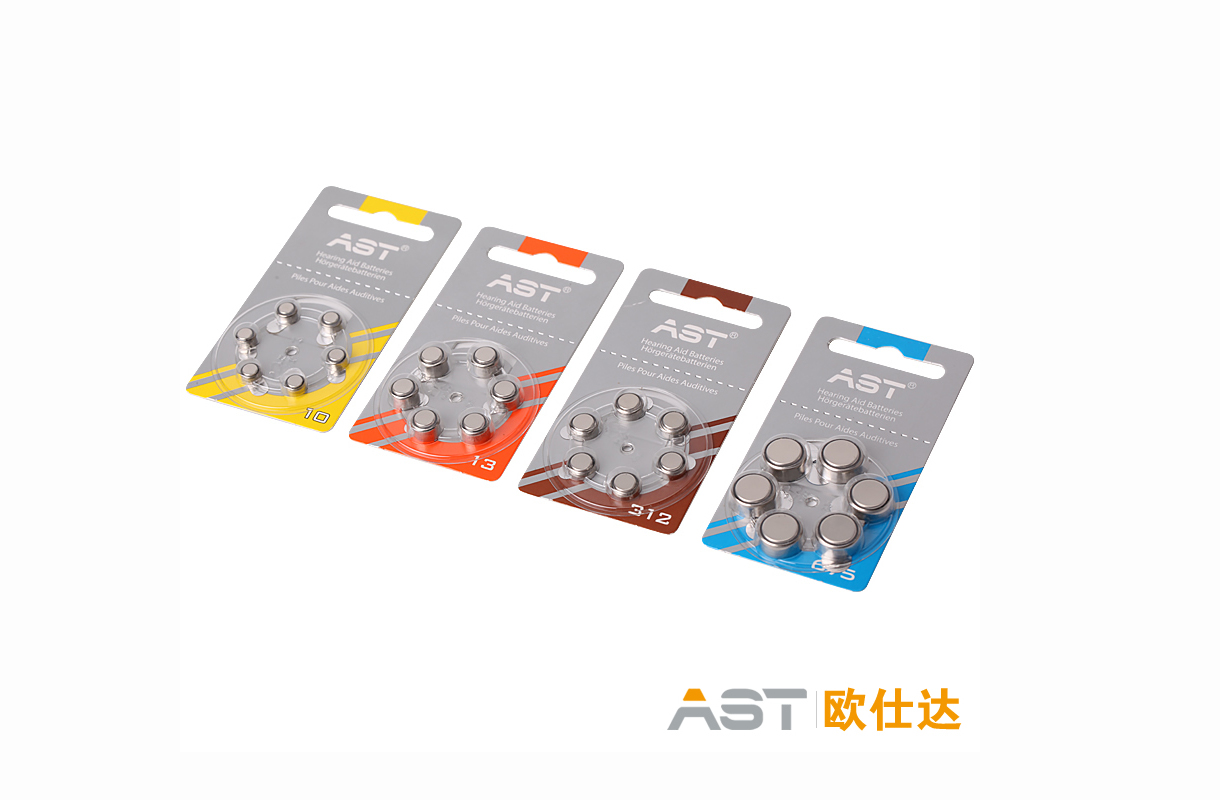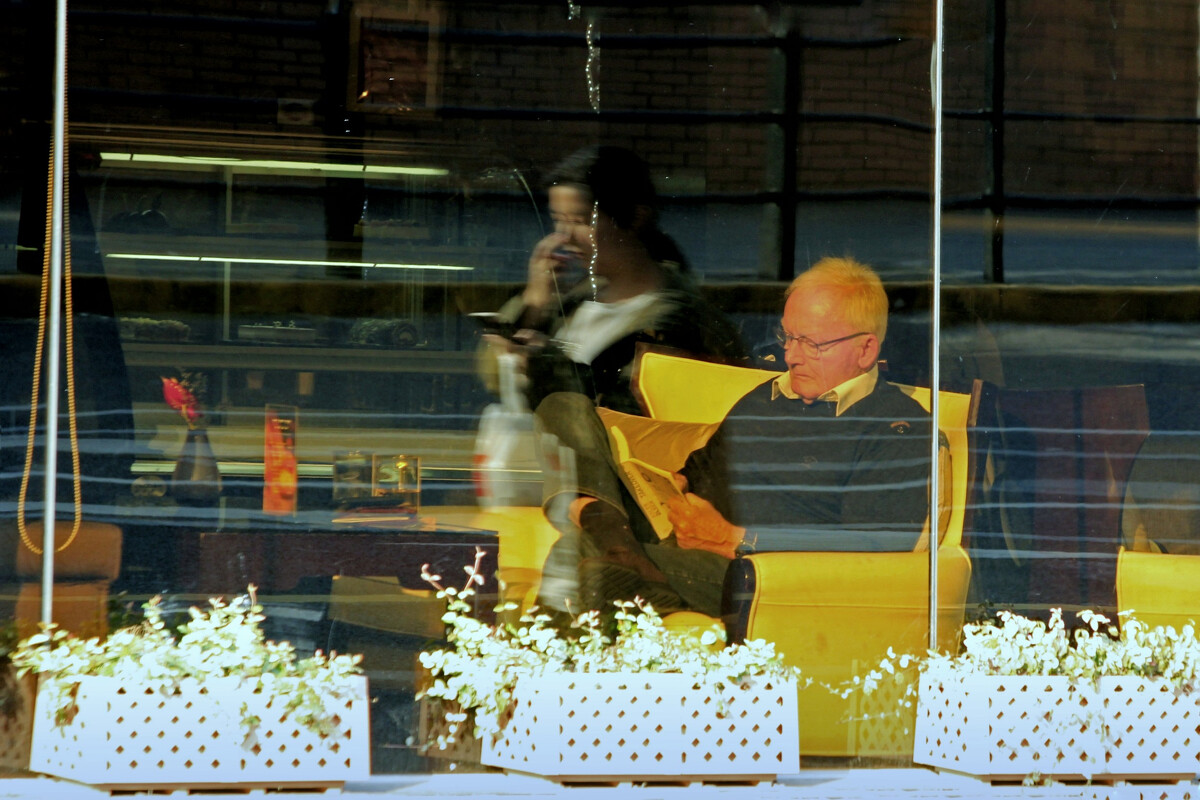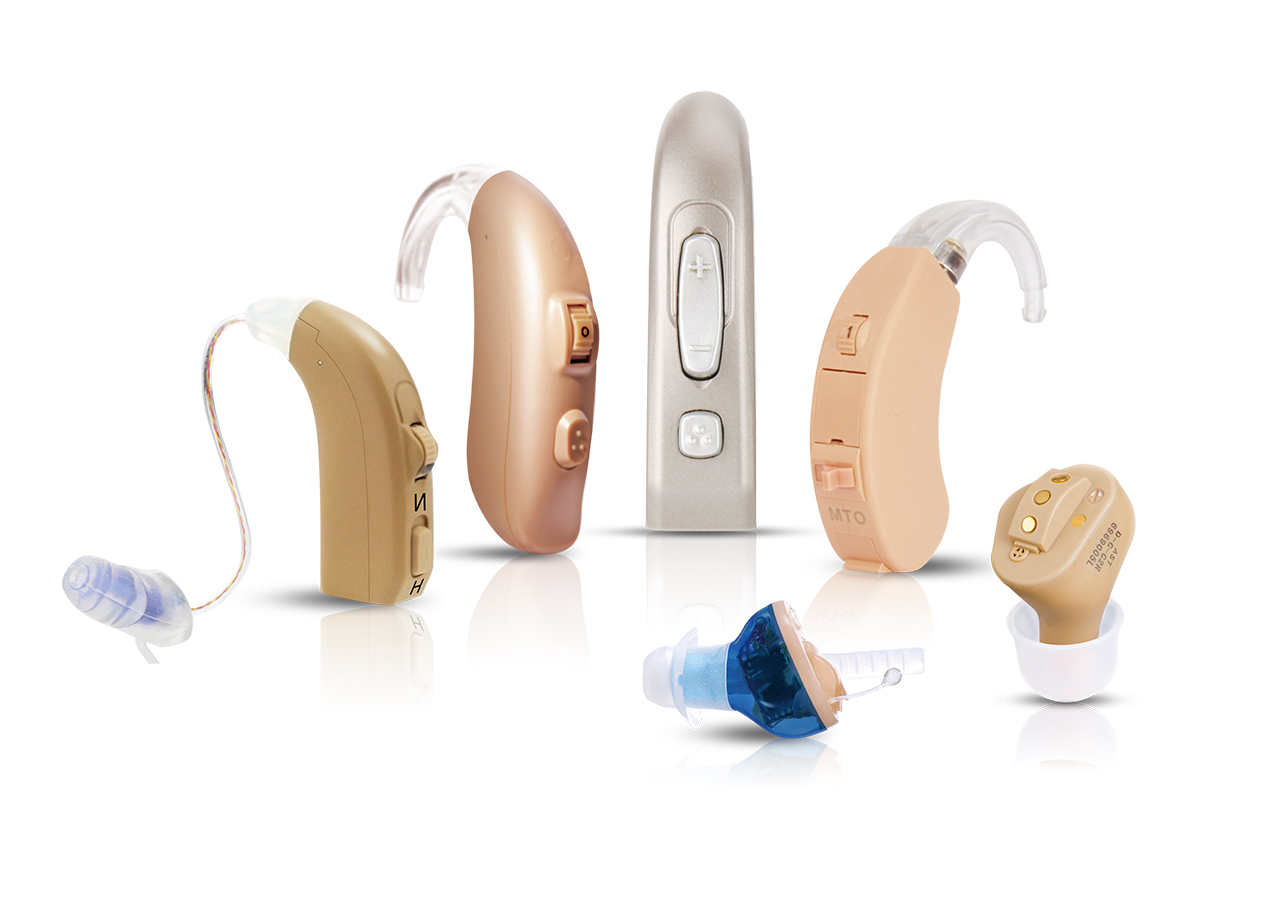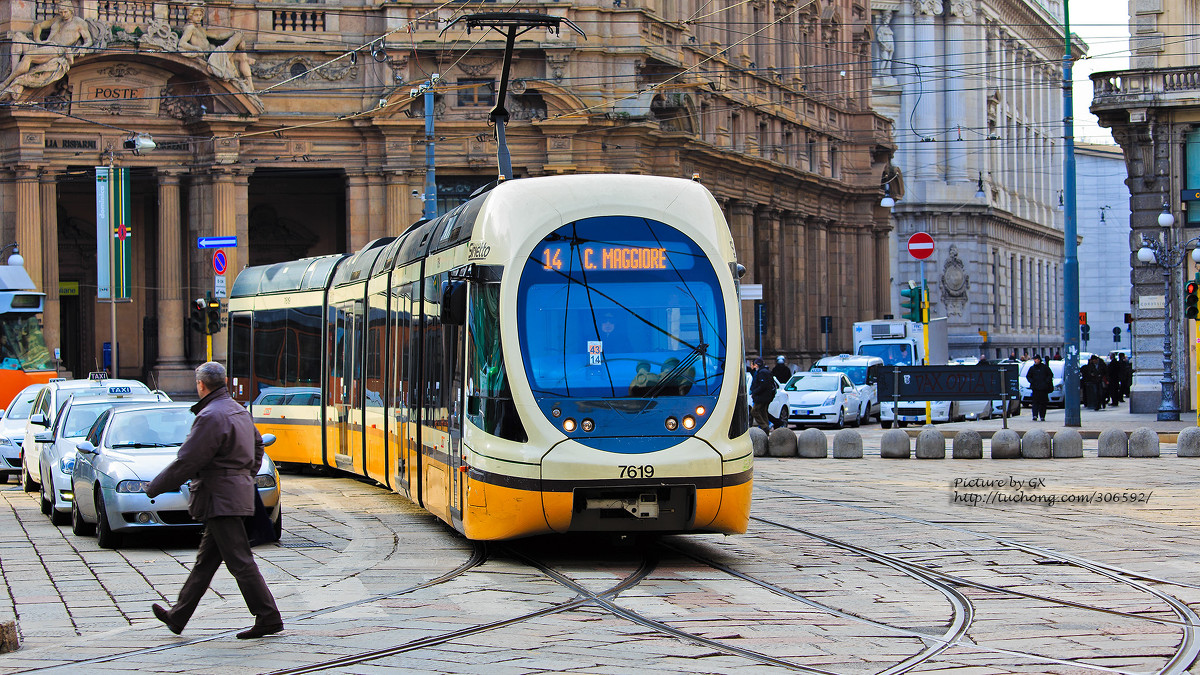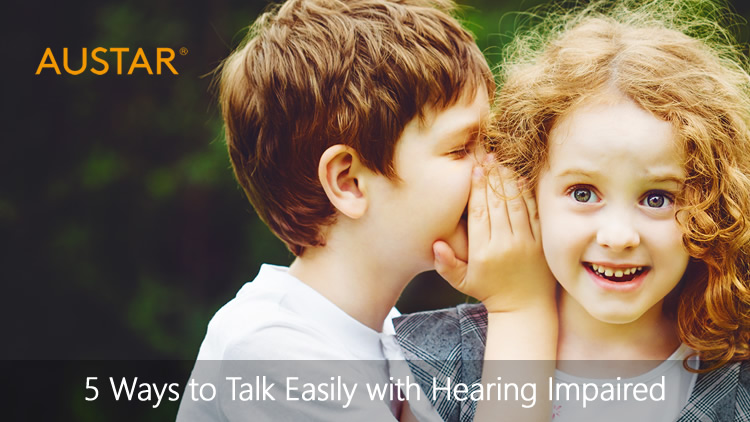
5 ways to make conversation easier for users wearing hearing aids
Many people mistakenly believe that wearing hearing aids can achieve normal hearing and immediate results, in fact, wearing hearing aids is only the beginning of the hearing rehabilitation process. Hearing aid wearers need to get used to new sounds and changes in timbre to re-establish self-confidence when communicating. Friends and family should gradually help them overcome difficulties in order to give them great help, 5 ways to help hearing aid users talk easily:

1. Keep the user focused before conveying the message and avoid talking to multiple people at the same time. We can pat the user before talking to him to help him focus on us, or ask the user to stop what they are doing to focus. For users with poor speech resolution, it is more recommended to understand one-on-one, avoid multiple conversations, and avoid distracting users.
2. Communicate face-to-face when speaking, using gestures, facial expressions, lip language to help users understand. Even when people with normal hearing communicate with others, face-to-face communication, supplemented by facial expressions and lip speech, can achieve the best results. This is even more important as a person with hearing impairment.
3. The speaker should speak clearly, talk at a normal communication distance and normal volume, and slow down the speed of speech. Often in life we have a misunderstanding, think that can not hear clearly the sound can be increased, does have a certain effect, but its effect is not as good as the normal volume to slow down the speed of speech, so in daily life we as family and friends to help our hearing impaired people with more patience, take the initiative to slow down the speed of speech.
4. Reduce background noise and try to keep users away from noise sources. For example, turn the sound off the TV or radio, or close the door to reduce noise.
5. When talking, if you find that the wearer is tired, do not force or prolong the conversation. Especially the elderly, due to age, are weaker and not suitable for long-term focused conversation.
AUSTAR: A leading professional Chinese hearing aid manufacturer and supplier, committed to improving hearing through technology for hearing-impaired users.
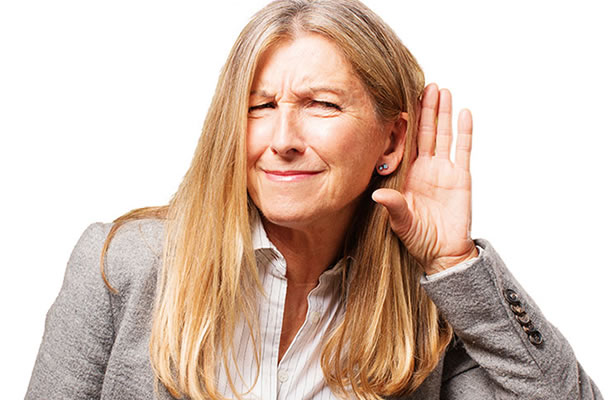
Best hearing aid buying guide for hearing loss and tinnitus
What is the best hearing aid on the market? Checking out new hearing aid technologies, price comparisons and reviews is what every hearing impaired person (such as the elderly) pays attention to when buying a hearing aid. We provide the best cheap hearing aid, If you want a hearing aid price list, please contact us.

Hearing loss is a widespread problem, although in our visually oriented society, it may not appear as that noticeable. The truth, however, is completely different. Struggling with hearing loss has a significant impact on daily activities, lifestyle, communication and emotional and physical health. In order to know that hearing impairment can be alleviated we have prepared a short guide to let you know how to better cope with a hearing problem.
Do I need a hearing aid?
What level of hearing loss requires a hearing aid? Do i need a hearing aid for mild hearing loss ( hearing test), how bad does your hearing have to be to get a hearing aid?

The first symptoms that suggest you may need to undergo an ear examination are problems with understanding conversations, hearing muffled speech, buzzing and ringing in the ear, listening to louder TV and radio, problems with hearing different voices especially in a noisy environment, etc. If you suspect that you have a hearing problem or experience some of the symptoms above, the most important step to take is to turn to an audiologist or an ENT specialist. They will determine the cause, degree and type of the hearing loss, whether it is treatable, how it can be alleviated and the most suitable hearing aid for your specific condition.
How can a hearing aid help me?
With the progression of hearing loss, you can have trouble with the different sound frequencies. Usually hearing impairment occurs firstly for the higher frequencies. The benefit of the hearing aid is that it amplifies the frequency that is hard to hear with the degree that is suitable and reduces background noise to help optimise speech understanding as much as possible.
What types of hearing aids are there?

Hearing aid manufacturers produce many types of hearing aids that can be used. The main types are behind the ear (including receiver in the ear and open fit) and in the ear (including in the canal and completely in the ear). Other hearing aid types are body worn, bone conduction, implants and disposable. The right hearing aid can be chosen depending on the type and severity of the hearing loss, age or personal taste.
How can I get a hearing aid?
You can get a hearing aid in two ways. One is to buy from an online store or a local hearing clinic. Another way is to buy directly from AUSTAR, contact us, tell us your hearing loss, the type of hearing aid you like, product model, etc.
Hearing aid batteries and accessories
In addition to paying for hearing aids, you should also consider other expenses related to the maintenance and care of the device. Usually, the hearing aids are equipped with batteries that have different durability (mostly depending on the size of the hearing aid). Behind the ear hearing aids batteries can last up to about 2 weeks while smaller models, such as in the ear ones have a shorter battery life. Accessories that you need may include cases, additional tubes, domes and cleaning supplies. We supply all of these for most types of hearing aids at very competitive prices when compared to the high street alternative.
About AUSTAR Hearing Aids
Xiamen AUSTAR is the largest hearing aid manufacturer in China, wholesale behind the ear (BTE) , in ear (ITE) hearing aids, rechargeable and other types of hearing aids and use our own fitting system software for programming hearing aids to ensure superior quality of hearing aids and make price competitive in this industry. Our main customers are hearing aid companies/distributors across the USA, Europe, Asia and Mid East.
If you are looking for a reliable Chinese manufacturer of hearing aids, contact us, you will find value in AUSTAR. We provide solutions for hearing aid companies/distributors to save time and price/costs. AUSTAR commit to provide customers with excellent service, satisfactory quality and competitive prices.

Invisible hearing aid types
Hearing aids worn in the ear canal are basically customized hearing aids, and the hidden hearing aids are also a kind of customized hearing aids. Common invisible hearing aids are IIC, CIC and ITC types. AUSTAR's instant fit CIC is the cheapest invisible hearing aid. Invisible hearing aid types pictures:

Types of invisible hearing aids
Hearing aids come in different sizes, colours and styles. Some hearing aids are bigger, others more discreet and some virtually invisible. The most widespread types of hearing aids are behind the ear and in the ear hearing aids. Although very small, these hearing aids are still visible from a certain angle or during a face-to-face conversation. That is why many people with a hearing impairment feel uncomfortable wearing them and want a device that is as discreet or hidden as possible.
In some cases, the problem can be solved surgically with the use of an implant, but this is a more complicated and expensive procedure. In order to make things simpler, hearing aid manufacturers have designed several specific types of devices, which are considered to be virtually too small to see – invisible in the canal, completely in the canal, in the canal and half shell.

Invisible in the canal hearing aids
This hearing aid type is practically invisible and the smallest possible you can find on the market. Each one is individually designed to fit in the ear of the specific user and although it can be very challenging to pack it with the latest innovations due to its small size, the technology is constantly developing and improving. However, such hearing aid types support mild to moderate hearing loss and do not fit in every ear canal. Other challenges include:
- difficult manipulation of functions due to the tiny size
- option for manual volume control is rarely available
- not suitable for children due to growth of the ear canal
- greater chance of feedback as the speaker and microphone are very close to each other
- can be easily damaged by moisture and earwax
- a ‘blocked-up’ sensation for some users
- not suitable for people with frequent ear infections
- short battery life
Completely in the canal hearing aids
The completely in the canal hearing aids are also custom fit for the individual ear and invisible to those around the wearer. Similarly to the IIC, a CIC is placed deep into the ear canal and closely imitates the normal hearing process because on one hand the speaker is near the eardrum and can improve the sound perception and on the other the microphone, sitting in the ear canal, may offer a better reception of the signal. A great choice at a very competitive price is the Instant fit CIC hearing aids, which is very discreet and features an adjustable volume and a digital sound technology for a crystal clear sound. If you are looking for the best/cheapest invisible hearing aid, then instant fit CIC hearing aid is your best choice.
It should be noted though that the completely in the canal hearing aids suffer the same disadvantages as the IIC.
In the canal hearing aids
In the canal hearing aids are another type of very small and hidden hearing aid. They are slightly smaller than the ITE but bigger than CIC devices. They are not visible from the front as they go in the entrance of the ear. Usually, people that do not qualify for the CIC are attracted to in the canal hearing aids as next in size. In the canal hearing aids are recommended for mild to moderate hearing loss. They offer natural reception of sound as the microphone is placed inside the ear canal. However, they still have the same drawbacks as the CIC hearing aids due to their small size and location.
Half shell hearing aid
The half shell hearing aid is a custom made hearing aid smaller than full shell ITE hearing aids as the name suggests. It sits in the lower part of the bowl shaped area of the outer ear. This type of hearing aid is suitable for mild to moderate hearing loss. It’s slightly bigger size allows easier manipulation and control and fits most ears. Still, it is susceptible to earwax and moisture and can easily be damaged by either. Its battery life is shorter than that of behind the ear hearing aids and in the ear hearing aids.

About AUSTAR Hearing Aids
Xiamen AUSTAR is a leading hearing aid manufacturer in China. Wholesale behind the ear (BTE) hearing aids, in the ear (ITE) hearing aids, rechargeable hearing aids and other types of hearing aids and use our own fitting system software for programming hearing aids to ensure superior quality of hearing aids and make price competitive in this industry. There are more and more hearing aid companies in the USA, Europe and Mid East choose to build long-term business relationships with AUSTAR.
Please feel free to contact us if you are hearing aid wholesalers/distributors and looking for a trustworthy Chinese manufacturer/supplier. No only the custom hearing aid are available, we have a strong R&D teams and engineers to support your any special requirement and development. We are not only your supplier, but your partner and technical supporter. AUSTAR commit to provide customers with excellent service, satisfactory quality and competitive prices, help you expand your market and save hearing aid price/costs!
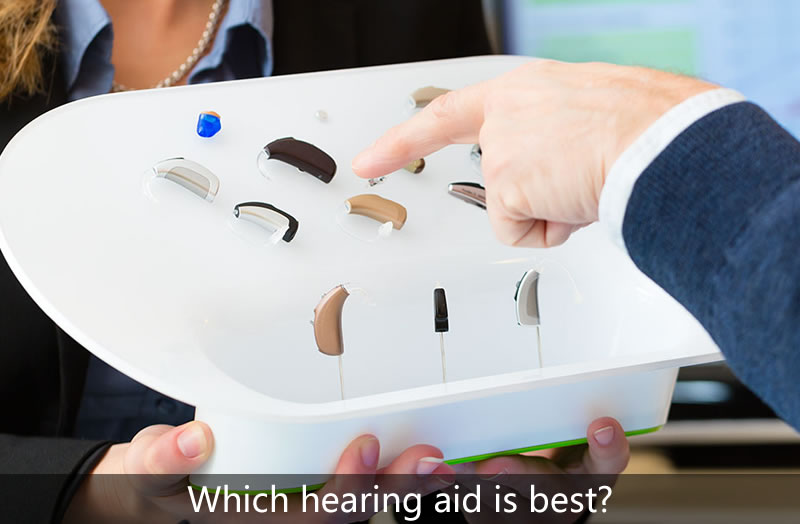
Which hearing aid is best?
Which is the best hearing aids for tinnitus, seniors and severe hearing loss? How to choose the best hearing aids? Today, the hearing aid market is very complex, constantly changing and offering an immense variety of hearing aids and assistive listening devices. When you literally have too many options to choose from, it can be very easy to become confused and frustrated over the decision you have to make. However, this diversity has also made a very positive impact on the hearing aid industry.

The leading hearing aid manufacturers are now in positive competition with each other, resulting in greater levels of customer satisfaction and modern high tech devices that are able to suit the needs of a much greater number of people. Of course, the race for the most innovative device also leads to one very important question, which every hearing aid user should ask themselves. The question is easy – “Which Hearing Aid Is Best?” The answer can be a bit complex and tricky. “Best” has to imply best for the individual and that is where the problem arises. Such as: which hearing aid is best for tinnitus? which hearing aid is best for severe hearing loss? which hearing aid is best for music? The personal needs of each person are as varied as the lifestyle that they lead and this is compounded by the degree and nature of their hearing loss. Faced with such variables, the argument must focus strongly on “best” having a high correlation with “flexible”.
What about hearing aids' style or type? Is there a best format amongst the range of behind-the-ear, in-the-ear, in the canal, bone anchored, etc. devices? The short answer is “No”. The best format is once again the system that will be most suitable for the individual. However, there are some certain facts that can help the user make a better choice. If the best format was to include reliability as one of its criteria, then we can state that there should be a leaning away from in-the-ear products and an emphasis on behind-the-ear solutions.
Without a doubt the best hearing aid is the one that works for you and gives back your world of communication. It is advisable to consult with a hearing aid specialist before you make your final choice.

Which hearing aid is best for tinnitus?
Which brand of hearing aid is best for tinnitus? what type of hearing aid is best for tinnitus? Most of the hearing aid products produced by AUSTAR have the function of masking tinnitus. You can choose the style you like from our BTE hearing aids and in-ear hearing aids.
Which hearing aid is best for music?
Our hearing aids with programming function have programs suitable for listening to music to choose from. Let you hear clearly in all kinds of scenes.
Which hearing aid is best for severe hearing loss?
At present, the hearing aids produced by AUSTAR basically have a series of hearing aids from mild to severe hearing loss. This is mainly based on your personal preference to choose a BTE or in-the-ear hearing aid. It is usually the best idea to choose BTE hearing aids for the seniors or kids with severe hearing loss.
About AUSTAR Hearing Aids

Xiamen AUSTAR is a leading manufacturer of hearing aids in China. Wholesale behind the ear (BTE) hearing aids, in the ear (ITE) hearing aids, rechargeable hearing aids and other types of hearing aids and use our own fitting system software for programming hearing aids to ensure superior quality of hearing aids and make price competitive in this industry. There are more and more hearing aid companies in the USA, Europe and Mid East choose to build long-term business relationships with Xiamen AUSTAR.
Please feel free to contact us if you are hearing aid wholesalers/distributors and looking for a trustworthy Chinese manufacturer/supplier. No only the custom hearing aid are available, we have a strong R&D teams and engineers to support your any special requirement and development. We are not only your supplier, but your partner and technical supporter. AUSTAR commit to provide customers with excellent service, satisfactory quality and competitive prices, help you expand your market and save hearing aid price/costs!
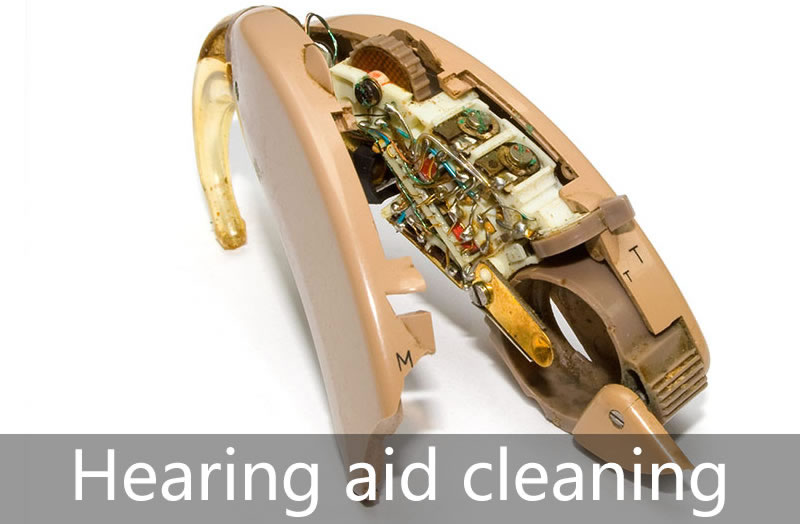
Dry aid box or kit is the best for hearing aid cleaning
Reasonable use of hearing aid cleaning wipes, solution and brush is the best way to clean hearing aids. The hearing aid cleaning kit inclue wipes/solution/brush etc.

Hearing Aid Cleaning Best Practices
Hearing aids should be cleaned when the device is on or held over a soft level surface. Bear in mind these devices include a number of sensitive electrical components and you are always better off taking longer due to taking extra care. To reduce the time required to clean in-the-ear (ITE) hearing aids, in particular, we strongly recommend the use of a ‘dry aid box’ or hearing aid kit. A dry box is designed to remove moisture and to dry earwax. Some of these dry aid boxes run on mains and even have built-in mechanisms to help eliminate germs. Dry boxes also provide a safe place in which to store the hearing aids overnight.

Hearing Aid Cleaning:
The most important part of maintenance is the prevention of possible problems which involves daily cleaning and inspection. Hearing aid components should last at least 4-5 years provided they are kept clean and all the various parts in working order. Daily cleaning and inspection is essential in ensuring their extended durability. Hearing aid cleaning can be done using a number of tools. Small brushes and/or wax remover tools are among the most popular. Hearing aid brush is used to gently brush over the entire surface of the shell (outer housing) of the device, while the wax tool is used on in-the-ear hearing aids to remove more persistent wax. If a thin-tubing fitting is used, a cleaning wire is recommended to be threaded through the tubing to ensure the removal of wax or moisture. If earmolds are used, the earmold and tubing can be removed from the hearing aid and cleaned in warm water – an air puffer is then a useful tool to use to ensure all moisture is cleared before the tubing is re-attached to the hearing aid. External dirt can also be removed with the use of antibacterial/anti-fungal wipes.
Why should hearing aids be cleaned?
Hearing aids are super-sophisticated devices that help the hard of hearing manage their hearing loss. To provide the required amplification level of sound, the device needs to be in working order and clean from wax and any other accumulated debris, such as dead skin cells. Wax that has accumulated on the hearing aid can cause intermittent faults or a complete blockage of sound. Most electrical devices, which includes hearing aids, can also be affected by moisture build-up on or around the components. Wax, together with the humid conditions that exist in the ear canal, unfortunately, create the perfect environment for the build-up of moisture on the hearing aid.
About AUSTAR Hearing Aids

Xiamen AUSTAR is a leading manufacturer of hearing aids in China. Wholesale behind the ear (BTE) hearing aids, in the ear (ITE) hearing aids, rechargeable hearing aids and other types of hearing aids and use our own fitting system software for programming hearing aids to ensure superior quality of hearing aids and make price competitive in this industry. There are more and more hearing aid companies in the USA, Europe and Mid East choose to build long-term business relationships with Xiamen AUSTAR.
Please feel free to contact us if you are hearing aid wholesalers/distributors and looking for a trustworthy Chinese manufacturer/supplier. No only the custom hearing aid are available, we have a strong R&D teams and engineers to support your any special requirement and development. We are not only your supplier, but your partner and technical supporter. AUSTAR commit to provide customers with excellent service, satisfactory quality and competitive prices, help you expand your market and save hearing aid price/costs!
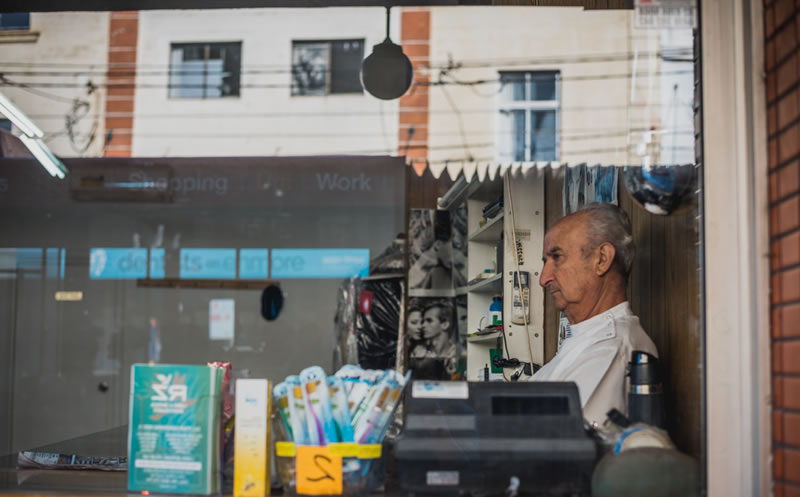
How to choose a TV hearing aid for the hearing loss?
How to choose a TV hearing aid for the hearing loss? TV listening devices for hearing impaired reviews, device to help elderly hear tv. Many people that suffer from hearing loss comment on problems hearing the television. This is traditionally tackled by simply turning up the volume; which of course helps but can cause many a cross word with others in the household (or sometimes with those in adjoining households!).

This is mostly due to a high frequency hearing loss (by far the most common type and frequently linked with age). This type of loss leads to challenges when trying to pick up the consonants in words, particularly the letters S, T, H, F, M, N etc. It is even more difficult for women’s and small children’s voices which have a higher frequency form overall.
As a consequence, changing the overall volume does help with these issues but also increases the volume of sounds unnecessarily; resulting in reaching for the remote every time a dramatic moment is emphasised by music.

How to choose a TV hearing aid for the hearing loss?
TV assistive listening devices
These clever devices are designed to provide a personal volume and tone setting for the individual, without affecting volume levels for the rest of the audience (or neighbours!). They usually take the form of a specialist set of headphones which operate wirelessly through infra-red or radio transmission. As they utilise the audio output from the scart connection, they do not interfere with the standard volume and tone settings for the TV and as such allow others to set these at a more comfortable level. These assistive listening devices have been historically popular for two main reasons, they have been much more affordable than the second alternative below and are only used for the purposes of TV viewing in the home and as such, attract less attention.
Hearing Aids
Hearing aids are designed to provide personal levels of volume or amplification with specific focus on certain frequencies; they offer much greater flexibility in this regard than TV Listeners and have several additional benefits. Firstly, they allow for communication from others whilst watching TV and provide or more ‘rounded’ sound picture as external noise sources are picked up; such as a doorbell, a telephone ring (or a smoke alarm!!). Secondly, they can be used to benefit in a far greater number of circumstances than is the case for TV Listeners extending to a variety of social circumstances as well as in the work place. As such they represent a far more flexible and broader beneficial option.
As a leading manufacturer of hearing aids in China, AUSTAR has a wide range of hearing aid products, both our Hearing Aids and TV Listeners start from amazingly affordable prices – which means price, at least, is no longer a reason not to try one…
About AUSTAR Hearing Aids

Xiamen AUSTAR is the leading manufacturer of hearing aids in China. Wholesale behind the ear (BTE) hearing aids, in the ear (ITE) hearing aids, rechargeable hearing aids and other types of hearing aids and use our own fitting system software for programming hearing aids to ensure superior quality of hearing aids and make price competitive in this industry. There are more and more hearing aid companies in the USA, Europe and Mid East choose to build long-term business relationships with Xiamen AUSTAR.
Please feel free to contact us if you are hearing aid wholesalers/distributors and looking for a trustworthy Chinese manufacturer/supplier. No only the custom hearing aid are available, we have a strong R&D teams and engineers to support your any special requirement and development. We are not only your supplier, but your partner and technical supporter. AUSTAR commit to provide customers with excellent service, satisfactory quality and competitive prices, help you expand your market and save hearing aid price/costs!

Can riding a motorcycle damage your hearing?
Can riding a motorcycle damage your hearing? and how to hearing protection when driving motorcycle.
Excessive noise can lead to noise-induced hearing loss, one of the main causes of hearing loss in the western world. Motorcycle riders, such as yours truly, are at particular risk unless adequate protection is used and sensible judgment is taken. Whether you are a weekend only rider or a rider by occupation, the risk is real. Noise-induced hearing loss is caused by prolonged exposure to damaging sounds over a certain time period. The ‘time period' in question to cause damage is determined by the length of exposure and the level of noise (measured in decibels/dB).

Causes of Noise For Motorcycle Riders: Exhaust - Exhaust sound and in particular aftermarket race exhaust without a baffle could easily top 110dB. It is unlikely that exhaust sound on its own will lead to hearing loss due to its position behind the rider at the back of the motorcycle, however when taken into account with other factors the risk grows. Wind - The faster the rider and motorcycle are moving, the more wind noise plays a factor in the overall risk assessment. At 70mph wind noise can exceed 100dB. It is thought that exposure to 100 decibels for only two hours can lead to hearing loss.
Helmet - Both the shape of the helmet and the fit will affect the level of noise. An open face helmet will provide less noise protection compared to a full-face helmet that has been well fitted. Incidentally a full-face helmet that is too big in size will provide less noise protection.

How To Reduce The Risk: Disposable Earplugs - There are a number of noise protection aids designed to reduce the levels of exposure. These noise protection aids will never completely eliminate noise, but rather reduce by a certain amount of db. Disposable earplugs of good quality carry a maximum noise reduction rating of 20 db.
Custom Made Earplugs - Molded earplugs differ from disposable earplugs by their fit that is individual to the particular ear canal shape of the wearer. Priced around US100, they are regarded as more comfortable, long lasting and easier to take in and out.
Quieter Helmets - An average full-face helmet measures 93.5dB at 70mph, however in the world of full-face helmets some are quieter than others.
Well Fitted Helmet - One that has been fitted well in terms of size will provide better noise protection regardless of the brand. A well-fitted helmet should fit snugly because with time it will mold to your precise face shape. The size of the helmet should correspond with the size of your head, which you should measure in cm. If unsure ask your local motorcycle shop assistant for their advice. Ride safely!
About AUSTAR Hearing Aids

Xiamen AUSTAR is the leading China manufacturer and supplier of hearing aids. Wholesale behind the ear (BTE) hearing aids, in the ear (ITE) hearing aids, rechargeable hearing aids and other types of hearing aids and use our own fitting system software for programming hearing aids to ensure superior quality of hearing aids and make price competitive in this industry. There are more and more hearing aid companies in the USA, Europe and Mid East choose to build long-term business relationships with Xiamen AUSTAR.
Please feel free to contact us if you are hearing aid wholesalers/distributors and looking for a trustworthy Chinese manufacturer/supplier. No only the custom hearing aid are available, we have a strong R&D teams and engineers to support your any special requirement and development. We are not only your supplier, but your partner and technical supporter. AUSTAR commit to provide customers with excellent service, satisfactory quality and competitive prices, help you expand your market and save hearing aid price/costs!
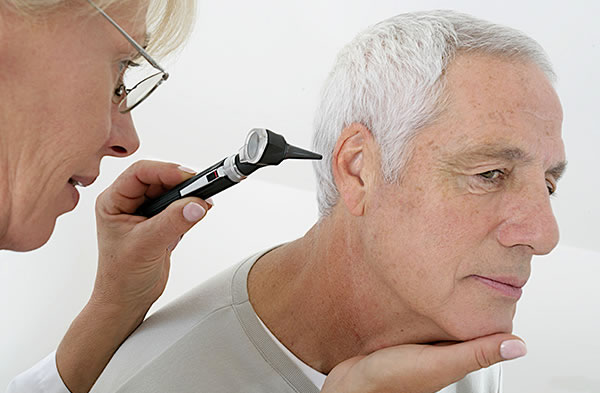
Do You Do Hearing Aids For Seniors?
Do You Do Hearing Aids For Seniors? Hearing aid for senior citizens, hearing aid for 80 year-old and hearing aids for seniors on medicare.
Hearing loss and the need for hearing aids is something that many of us associate with old age (see age related hearing loss). But what do we mean by old age? It is interesting to note that we also associate the need for reading glasses with getting older but do we see them in the same light? In reality, the development of mild to moderate high frequency hearing loss affects almost exactly the same group of people that develop the need for reading glasses; it is simply a factor of growing older.

If one were asked to describe our experiences of hearing aid wearers, most would picture someone in their 70's or 80's or older and usually someone who has particularly noticeable hearing loss. Some of course would picture a child or young adult they know as, clearly, hearing loss is not solely an age related issue; thankfully, however, these cases are in the minority.
If we were asked to describe our experiences of reading glasses wearers, most would picture someone in their 50's or 60's perhaps – not the same age as hearing aid wearers. Why is that the case?
Mostly, this is because it is true – if a need for reading glasses is established it is normally something that is pretty quickly acted upon and whilst still perceived as a ‘sign of ageing’ it does not carry the same degree of ageing as a hearing aid might. This ageing label is self-fulfilling in a sense, ‘I won't get hearing help because it will ‘age’ me more than glasses do’ – therefore those that do eventually obtain some help are older and re-enforce the stereotype.
It is something I have raised before but one does wonder whether by missing out on conversation, replying inappropriately to a misheard question or withdrawing from social situations is more ‘age' labelling than the issue of addressing it in the first instance.

In any event, the need for hearing aids as opposed to the process of obtaining one is as common as the need for reading glasses and affects broadly the same group of people. Yet the number of people seeking hearing aid help in comparison to visual help is tiny – driven almost entirely by the undesirable ‘ageing’ label they seem to attract.
So, when I am asked whether we have hearing aids for the elderly, of course my answer is yes, although I often back this up by saying that we also offer hearing aids for those that need them and most of them are not what one would typically define as ‘seniors’( older adults /seniors/elderly).
About AUSTAR Hearing Aids

Xiamen AUSTAR is the leading China manufacturer and supplier of hearing aids. Wholesale behind the ear (BTE) hearing aids, in the ear (ITE) hearing aids, rechargeable hearing aids and other types of hearing aids and use our own fitting system software for programming hearing aids to ensure superior quality of hearing aids and make price competitive in this industry. Our main customers are hearing aid companies/distributors across the USA, Europe, Asia and Mid East.
If you are looking for a reliable Chinese manufacturer of hearing aids, contact us, you will find value in AUSTAR. We provide solutions for hearing aid companies/distributors to save time and price/costs. AUSTAR commit to provide customers with excellent service, satisfactory quality and competitive prices.
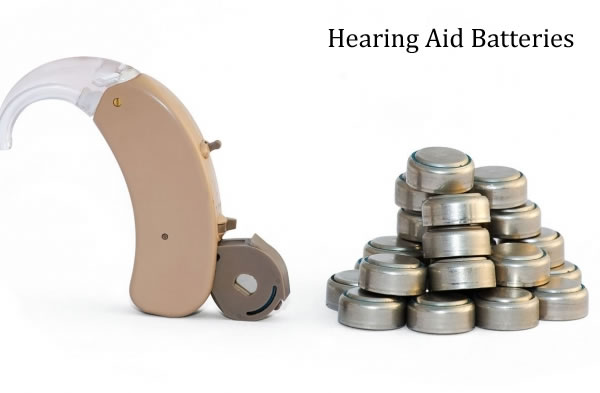
How to safely disposing of hearing aid batteries?
Where to Recycle Hearing Aid Batteries? When you wear hearing aids, it's easy to find yourself with a pile of tiny used batteries. How should you dispose of them safely or even better recycle them?
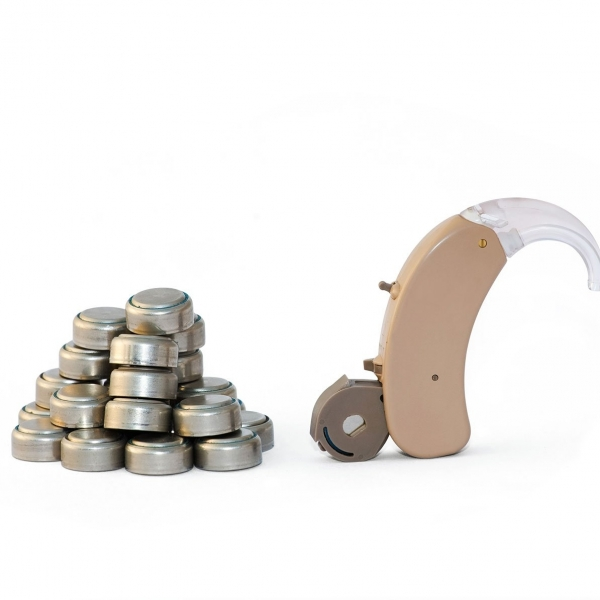
Tips For Safely Disposing Of Hearing Aid Batteries
1. Never burn batteries as it might lead to an explosion or release harmful chemicals into the air.
2. Check with your local authority about possible collection hubs. For UK Customers some website has a useful map of locations which take back used batteries. If you have decided to accumulate large numbers of used batteries before safely disposing of them, store them well away from children and pets. We have previously written a blog post on how to store hearing aid batteries which makes useful reading, as some of the tips are applicable for storing used batteries as well.

3. In some rare cases, your local authority cannot help, but not all is lost. Check with your local doctor's surgery, NHS audiology department, pharmacy or even a local library.
4. Try to recycle the packing that came with them. Hearing aid wearers can go through many packs of batteries during a given year and therefore the packaging on its own is a goal for recycling. Most batteries were discarded into landfill before regulations came into force. Batteries contain various hazardous metals such as lead, mercury, cadmium, zinc, manganese and lithium. It can be damaging to the environment to dispose of them through landfill and burning batteries also causes atmospheric pollution. Also, the resources reclaimed from the batteries are the very same materials being mined (at great cost) in other parts of the world. By helping to recycle batteries not only are you helping the environment but also helping to keep down the cost of new batteries.
Rechargeable Hearing Aids

Increasingly you can get hearing aids which are rechargeable. You can plug them into a USB cable or a charging cradle overnight to get a full day's use. So if you don't want to worry about batteries any more or find the smaller size batteries hard to cope with then have a look at the rechargeable hearing aids in AUSTAR.
About AUSTAR Hearing Aids
Xiamen AUSTAR is the leading China manufacturer and supplier of hearing aids. Wholesale behind the ear (BTE) hearing aids, in the ear (ITE) hearing aids, rechargeable hearing aids and other types of hearing aids and use our own fitting system software for programming hearing aids to ensure superior quality of hearing aids and make price competitive in this industry. Our main customers are hearing aid companies/distributors across the USA, Europe, Asia and Mid East.
If you are looking for a reliable Chinese manufacturer of hearing aids, contact us, you will find value in AUSTAR. We provide solutions for hearing aid companies/distributors to save time and price/costs. AUSTAR commit to provide customers with excellent service, satisfactory quality and competitive prices.

How frequently should i replace my hearing aid?
New Hearing Aids When To Replace An Old One? How often do hearing aid batteries need to be replaced? and do you need to upgrade your hearing aids? This is a topic about the lifespan of hearing aids, and hearing aid wearers often ask this question.

For hearing aid wearers, the device offers a means to manage their hearing loss and improve their quality of life in an instant, so naturally they come to depend on its reliability. There might come a time, perhaps sooner than one may think where a new or replacement hearing aid should be considered. Here are a few common scenarios.

1. Change of style and moving with the times - Hearing aids are split into types by the way in which they fit the ear. The most recently popular design is a mini or micro open fitting behind-the-ear(BTE) which as the name suggest, fits behind the ear of the wearer. In recent years more thought has gone into the contemporary design of hearing aids with an aim to make the device smaller, more compact and the holy grail... more discreet. Changing style is a common consideration for replacing the aid in particular with regards to comfort.
2. New technology - Most of us are familiar with the scenario of buying an electronic device which at the time of purchase is the most advanced or current model to quickly discover that a new model is on its way with newer technology. While technological improvements in the hearing aid industry won’t rival the likes of mobile phones for example, technology is continually improving. Amplification grows, sound is better distinguished, new features added and other recent developments make hearing aids an even better solution today than they were even a few short years ago.

3. Broken or damaged hearing aid - Repairing a device when its out of warranty can be very costly. If there was ever a logical situation to consider a new hearing aid, this is the one. Even if the aid was fixed professionally and is now in working order, hearing aids (and in particular in the ear (ITC) hearing aids) are susceptible to moisture and wax damage. A new hearing aid will come with a new warranty covering the complete device, not just the most recently replaced part as can often be the case with repaired hearing aids.
4. Affordability - Xiamen AUSTAR provide affordable hearing aids. There are cheap hearing aids and high-end hearing aids for you to choose from.
About AUSTAR Hearing Aids
Xiamen AUSTAR is the leading China manufacturer and supplier of hearing aids. Wholesale behind the ear (BTE) hearing aids, in the ear (ITE) hearing aids, rechargeable hearing aids and other types of hearing aids and use our own fitting system software for programming hearing aids to ensure superior quality of hearing aids and make price competitive in this industry. Our main customers are hearing aid companies/distributors across the USA, Europe, Asia and Mid East.
If you are looking for a reliable Chinese manufacturer of hearing aids, contact us, you will find value in AUSTAR. We provide solutions for hearing aid companies/distributors to save time and price/costs. AUSTAR commit to provide customers with excellent service, satisfactory quality and competitive prices.














